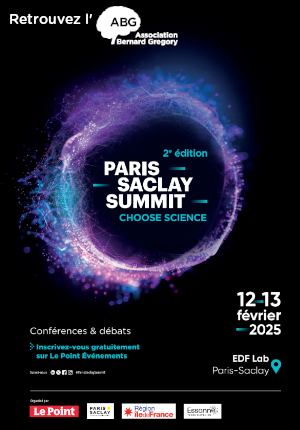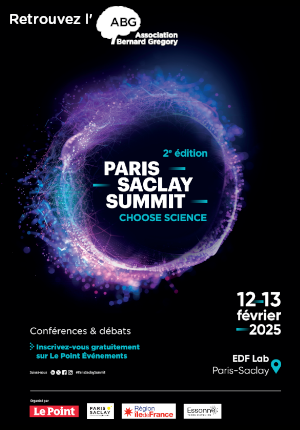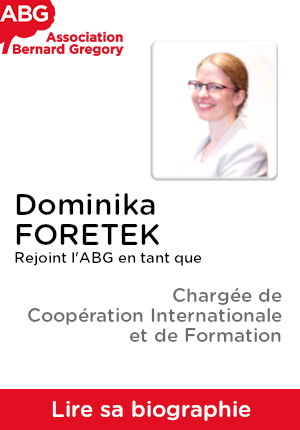Transport phenomena of carbon capture process in microfluidics through in-situ investigations
| ABG-128304 | Thesis topic | |
| 2025-02-03 | Other public funding |

- Engineering sciences
- Physics
Topic description
Carbon dioxide (CO2), as a major greenhouse gas, has raised great concerns in terms of global warming and climate change. Therefore, Carbon Capture, Storage and further Utilization (CCSU) is considered as a crucial strategy for meeting CO2 emission reduction targets as defined in COP21 in 2015, and in the Paris agreement signed in 2016 [1]. Different technologies are actually available for removing large amounts of CO2 from natural, refinery and synthesis gas streams [2]. Among them, the most mature and widely used technique is the chemical absorption/desorption process using alkanolamine-based solvents [3, 4].
In terms of equipment needed for CO2 capture and storage, current chemical absorption process usually involves towers or packed columns having huge volumes and low efficiencies in heat and mass transfer. They usually occupy large spaces, are difficult to control and not energy-efficient. Furthermore, they bring safety and reliability issues to the industrial facilities. One of the routes to realize the CO2 absorption/desorption process intensification is through the miniaturization, more precisely the employment of microfluidic devices [5, 6], providing a largely reduced required volume, enhanced mass and heat transfer through a dramatic increase in interfacial area, cleaner, safer, higher productivity and more efficient use of energy.
The general objective of this PhD is to enhance the absorption efficiency of such a miniaturized process, whithin two-phase flows designed to break and fold gas-liquid interfaces [7] and boundary layers while keeping an acceptable pressure drop. In addition to well-known optical measurements, the means of non-intrusive optical investigation to determine the field of pH [8], then the gradient of dissolved CO2 concentration, are new in this field and particularly developed in our research team and network. They (i) bring an explanation to the improved absorption efficiency, (ii) enable further optimization of the two-phase flow and (iii) open the way to a precise comparison to CFD results.
Globally, this Ph.D. topic and research environment at LTeN lab is the opportunity to work for sustainable development through an improved CCUS process [9], to develop and publish cutting-edge results about chemical absorption of CO2 within a miniaturized, industrially-efficient gas-liquid flow [10,11] by means of innovative optical measurements.
LITTERATURE REFERENCES
[1] Paris Agreement". United Nations Treaty Collection. 8 July 2016.
[2] Leung, D.Y.C., Caramanna, G., Maroto-Valer, M.M. An overview of current status of carbon dioxide capture and storage technologies (2014) Renewable and Sustainable Energy Reviews, 39, pp. 426-443. DOI: 10.1016/j.rser.2014.07.093
[3] Vega, F., Baena-Moreno, F.M., Gallego Fernández, L.M., Portillo, E., Navarrete, B., Zhang, Z. Current status of CO2 chemical absorption research applied to CCS: Towards full deployment at industrial scale (2020) Applied Energy, 260, art. no. 114313. DOI: 10.1016/j.apenergy.2019.114313
[4] Zhang, Z., Wang, T., Blunt, M.J., Anthony, E.J., Park, A.-H.A., Hughes, R.W., Webley, P.A., Yan, J. Advances in carbon capture, utilization and storage
(2020) Applied Energy, 278, art. no. 115627. DOI: 10.1016/j.apenergy.2020.115627
[5] Ganapathy, H., Steinmayer, S., Shooshtari, A., Dessiatoun, S., Ohadi, M.M., Alshehhi, M. Process intensification characteristics of a microreactor absorber for enhanced CO2 capture (2016) Applied Energy, 162, pp. 416-427. DOI: 10.1016/j.apenergy.2015.10.010
[6] Aghel, B., Heidaryan, E., Sahraie, S., Mir, S. Application of the microchannel reactor to carbon dioxide absorption (2019) Journal of Cleaner Production, 231, pp. 723-732. DOI: 10.1016/j.jclepro.2019.05.265
[7] Hao Cheng, Dominique Tarlet, Yilin Fan, Lingai Luo, Mass transfer enhancement for CO2 chemical absorption in a spiral baffle embedded microchannel, Chemical Engineering Science, Vol. 280, 2023, https://www.sciencedirect.com/science/article/pii/S0009250923005249
[8] M. Wang, M. Stiti, H. Chaynes, S. Becker, E. Berrocal, F. Lemoine, G. Castanet, Two-photon fluorescence lifetime imaging applied to the mixing of two non-isothermal sprays: temperature and mixing fraction measurements, Experiments in Fluids, 2022, 63 (11), pp.172.
[9] Hao Cheng, Yilin Fan, Dominique Tarlet, Lingai Luo, Zhiwei Fan, Microfluidic-based chemical absorption technology for CO2 capture: Mass transfer dynamics, operating factors and performance intensification, Renewable and Sustainable Energy Reviews, Vol. 181, 2023, https://www.sciencedirect.com/science/article/pii/S1364032123002149
[10] H. Cheng, D. Tarlet, Y. Fan, L. Luo, Enhancement of carbon dioxide chemical absorption in microchannel with structured baffle, 8th European Process Intensification Conference (EPIC), May-June 2023, Warsaw, Poland
[11] Hao CHENG, Dominique TARLET, Lingai LUO, Yilin FAN, Dynamics of Taylor bubble under chemical reaction enhanced mass transfer in minichannel, Separation and Purification Technology, Volume 341, 2024,
https://www.sciencedirect.com/science/article/pii/S1383586624006397
Starting date
Funding category
Funding further details
Presentation of host institution and host laboratory
The Laboratoire de Thermocinétique de Nantes (LTN) was created in 1967 as a joint laboratory between French CNRS (INSIS) and Nantes Université. Since January 2018, it has become the LTeN (Laboratoire de Thermique et Energie de Nantes).
The LTeN has a long history in the field of Heat Transfer, wich is widely known at both the french and international level. Its detailed experimental approach is based on recognized skills and in-house methods, and on an in-depth analysis and modelisation of the physical phenomena as well. Its activities are quite balanced between fundamental research and applied technological developments.
Its activities are composed of two main topics :
- Heat transfer within materials and through interfaces : The goal is to analyse, at different scales of space and time, heat transfer within solid materials in order to control their properties that can be inhomogeneous. Numerous industrial applications are then developed in the field of material engineering.
- Heat and mass transfer within fluids and energy systems : The goal is to efficiently manage energy and heat transfer at different scales from local to the whole facility, in order to improve the overall performance of the process. For instance, temperature distribution within multi-functional heat exchangers, energy storage through Phase Change Materials (PCMs), or management of fluids within Fuel Cells are studied in the frame of sustainable development.
The LTeN included 74 people in 2020, including 30 permanent researchers and 32 Ph.D. students and post-doctoral fellows. Around 1 student is graduating their Ph.D. every year. It publishes around 30 articles in peer-reviewed international journals per year. It is located on an area of 2600 sq. meters, including 600 sq. meters of offices, 1000 sq. meters of experimental rooms, and 1000 sq. meters of storage facility.
Website :
PhD title
Country where you obtained your PhD
Institution awarding doctoral degree
Graduate school
Double degree
YesCountry where the PhD was obtained in cotutelle
Establishment awarding the doctorate in cotutelle
Candidate's profile
The candidate to the CSC scholarship can be a chinese student applying to CSC through this application process :
https://polytech.univ-cotedazur.eu/research/phd-funding
Vous avez déjà un compte ?
Nouvel utilisateur ?
Get ABG’s monthly newsletters including news, job offers, grants & fellowships and a selection of relevant events…
Discover our members
 ADEME
ADEME  PhDOOC
PhDOOC  Aérocentre, Pôle d'excellence régional
Aérocentre, Pôle d'excellence régional  MabDesign
MabDesign  CASDEN
CASDEN  Ifremer
Ifremer  MabDesign
MabDesign  SUEZ
SUEZ  Nokia Bell Labs France
Nokia Bell Labs France  Groupe AFNOR - Association française de normalisation
Groupe AFNOR - Association française de normalisation  Institut de Radioprotection et de Sureté Nucléaire - IRSN - Siège
Institut de Radioprotection et de Sureté Nucléaire - IRSN - Siège  Institut Sup'biotech de Paris
Institut Sup'biotech de Paris  ANRT
ANRT  ONERA - The French Aerospace Lab
ONERA - The French Aerospace Lab  CESI
CESI  Laboratoire National de Métrologie et d'Essais - LNE
Laboratoire National de Métrologie et d'Essais - LNE  TotalEnergies
TotalEnergies  Tecknowmetrix
Tecknowmetrix  Généthon
Généthon







